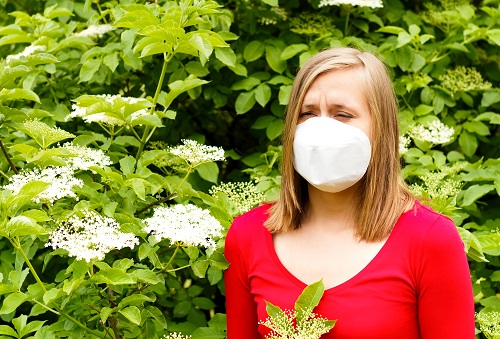POLLEN ALLERGY : KAFUN
For so many years, pollen allergies have hit more and more Japanese. Cedar trees are the ones producing these pollen that created unique conditions to Japan. From early February till first part of May, vast amounts of the pollen drifts over wide areas every year, and during that time you will see people wearing masks wherever you go. Cedar pollen allergies have become an unfortunate trend.
The environment ministry says that Japanese cypress and cedar pollen levels predicted for spring this year are expected to be twice as high as they were in 2014.
The ministry is urging the people to be more cautious as pollen levels will be particularly high during dry and windy days. People suffering from hay fever are obliged to wear protective masks and or hats, and if you’re doing laundry or washing, hang their clothes to dry inside their homes in order to reduce the overall amount of contact they have with the airborne allergens.
Reports said that the high temperatures and excessive rainfall experienced last summer caused the pollen levels to elevate higher than expected to all regions of Japan.
Pink and white cherry blossoms provide a beautiful backdrop for picnics across Japan but it also signals the start of the ‘hayfever’ season. Facemasks and specialty goggles are used to fend off clouds of pollen that make noses stream and eyes itch.
Runny nose and sneezing are a minor inconvenience, but for some, the allergy to pollen causes nasty congestion, headaches and a racking coughing. For the unlucky few, asthma and bronchitis can follow.
Surveys showed that one out of four people in Japan suffers from “kafun-sho” (pollen illness).
During this season where pharmacies are busy stacking up surgical masks to meet demand that has swelled five-fold over the last decade, alongside glasses, tissues and different allergy medicines to combat the allergy.

Sources says the market soars high estimating to $1.5 billion every year selling “kafun-sho” items or goods like air purifiers, bed cleaners, pollen-absorbing sprays that repel pollen and water. “Kafun Blocker” is a battery-operated beekeper-like nylon hood that makers say almost 100 percent of pollen are being shut by taking air through a fan and a filter on its top as one of the best selling item so far for people who works outdoors.
Coming of spring has always been a celebrated thing in Japan especially when they are awaiting for the cherry blossoms to spread all over Japan, however, newscasters show special warnings of the density of airborne particles at different locations before they touch on cherry blossoms news.
While these delicate blooms might appear to be at the root of hayfever-sufferers’ misery, they are relatively benign compared with pollen from ragweed, birch, grasses or other wild plants. By far the largest source of the irritant is the man-made woodland that sprang from the nationwide program of tree planting as Japan rebuilt after World War II.
Pollen from “sugi” is an indigenous cedar-like Japanese evergreen, whom sources said is held responsible for 70 percent of pollen allergies, and is at its most rampant in March and April. A month later, “hinoki”, Japanese cypress , adds to the suffering, releasing clouds of pollen across the country.
Sugi is a light, soft, fragrant and with a delicate patina that has been systematically planted as building material for centuries in Japan.
After WWII, the government led a drive to plant sugi and hinoki trees to meet demands for fast-growing, high-quality timber. The liberalization of the importation of timber in 1964 started to pressure sugi domestic products of the market. Sugi forest have been abandoned that led to its increase in pollen because of not being logged and replanted.
Eliminating allergies
Methods of treating sugi pollen allergy have improved as far as the new methods of eliminating allergies are concerned. “Sublingual Immunotherapy” is the one leading by which using it says 1/3 of patients got rid of almost all symptoms and 50% have some relief.
The government for its part has led projects since 1999 to plant saplings of sugi varieties which produce little pollen as little as one percent of that produced by ordinary trees.
Sugi forests serve a variety of public purposes such as national land conservation, prevention of global warming and cultivation of water sources. Air pollutants, stress and the westernization of lifestyle including eating habits have combined to worsen symptoms of pollen allergy, as what many experts says.
In 2012, the ratio of sugi saplings of varieties had reached 10.4 percent. Experiments are ongoing develop saplings that produce no pollen at all and part of it is through genetic engineering.
Experts say that productions of sugi will never be stopped as it grows fast and it can easily be utilized as building material. The sugi pollen has increased in 1965 significantly and may probably be on its peak by the year 2050.